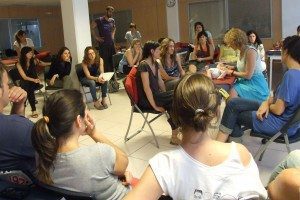The UK’s Osteopaths provide over 8 million consultations a year for musculoskeletal problems and problems that may be related to musculoskeletal dysfunctions.
 Our expertise in treating back and other pain is sought by people both young and old and from all occupations and walks of life.
Our expertise in treating back and other pain is sought by people both young and old and from all occupations and walks of life.
The Department of Health recommends prompt treatment of back pain from osteopaths and other physical therapists. When patients entrust the care of their back to an osteopath’s hands, we aim to treat the symptoms, help find out what is causing the problem and give advice to prevent it recurring in the future.
Osteopathy is primarily concerned with the study of structural and mechanical faults in the body and how these faults affect physiological processes. We work by diagnosing structural / mechanical ‘faults’ and working to correct these. The body’s structure and function are inseparable. Alterations of structure by injury, faulty posture, etc. affect function. We place primary importance on restoring function.
Each individual is unique – osteopathic medicine aims to promote health by improving each individual’s physical function, leading each individual towards recovery, greater well-being and lowered susceptibility to illness in general
All body functions are involved in the response to disease -problems and dysfunctions of the body framework / musculoskeletal system may adversely affect the body’s ability to respond to disease. Subtle changes in this system may form a focus from which other tissues and systems are adversely affected.

As structure and function are inseparable and interrelated at all levels, alterations of structure by injury, faulty posture, etc. affect function. Equally function affects structure – poor posture over time affects the neck and back mechanics. This relationship applies to all the body systems.
We place primary importance on restoring function – restoring alignment is secondary as most of us have mild differences in leg lengths, mild spinal curves that make perfect alignment virtually impossible to maintain.
We don’t “put bones / discs back into place”, we aim to remove any mechanical hindrance to normal movement, treating the body’s structures to help improve function.
The practice of Osteopathy is an integrated method of treatment involving soft tissue massage, joint articulation, traction, very gentle indirect techniques (‘cranial’), manipulation and the prescription of exercises, home care advice – it may also include some other treatment modalities.
We rely on constant reassessment and adapt our techniques to suit the patient and their problems rather than a ‘one size fits all’ approach – every neck pain, shoulder pain or tennis elbow is unique and may well be coming from an area in the spine or an imbalance in the pelvis – thus so is treatment.
We are interested in your history of illnesses, your digestive problems or accidents and trauma as well as any current health issues. This allows us to consider how all the falls, mild strains from falls or illnesses may have impacted, say, a recurrent sports injury or a long-standing bad back. Easing the strain on a rib after a fall during judo or off a bike may be assisted by treatment on the pelvis, whose mechanics may have been compromised mildly by the fall.
Spraining an ankle might lead the whole body to compensate for a limp. If shoulders, the spine, neck or pelvis is stiff or has restricted mobility, then it can be difficult for some people’s bodies to compensate for the limb, and aching or pain may result elsewhere.
 Patients may just come for treatment of their back or neck, but many often report indirect, secondary benefits of easing these musculoskeletal imbalances, dysfunctions and strains.
Patients may just come for treatment of their back or neck, but many often report indirect, secondary benefits of easing these musculoskeletal imbalances, dysfunctions and strains.
Our experience is that patients report treatment helps them to feel more relaxed; gentle osteopathic work can sometimes help soothe and relax babies.
